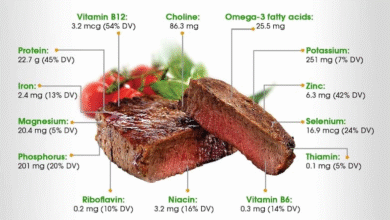Dopamine Anchoring: Transform Tasks Into Rewards

Dopamine anchoring is an innovative brain psychology hack gaining popularity for its potential to enhance motivation and improve focus. This psychological technique involves pairing a less enjoyable task with something pleasurable, such as music or snacks, thereby conditioning your brain to associate these activities with rewards. As noted by experts, this method not only aids in overcoming procrastination but also serves as a beneficial strategy for those dealing with behavioral psychology challenges like ADHD. By strategically implementing dopamine anchoring, you can effectively transform daunting chores into more manageable and even enjoyable experiences. Embracing this approach may offer new motivation techniques to conquer tasks at the end of a long week, leading to a more productive mindset.
The concept of reward-based conditioning is at the heart of dopamine anchoring, a method designed to reshape our perceptions of tasks we often dread. By associating enjoyable stimuli—like favorite songs or treats—with challenging activities, individuals can create a positive reinforcement loop that enhances their willingness to engage in those tasks. Commonly recognized as a behavioral modification strategy, this technique draws from principles found in motivational psychology and neurochemical responses in the brain. Whether used as an ADHD strategy or an everyday focus tool, these proven tactics help foster a healthier relationship with our daily responsibilities. Ultimately, the goal is to transform how we approach tasks, making them seem less like burdens and more like opportunities for reward.
Understanding Dopamine Anchoring in Behavioral Psychology
Dopamine anchoring is revolutionizing behavioral psychology by offering a unique approach to motivation. This technique focuses on creating a positive association between mundane tasks and pleasurable stimuli. For example, by pairing enjoyable activities—such as listening to music or indulging in a favorite snack—with chores or responsibilities that one might typically avoid, individuals can train their brains to view these tasks more favorably. Over time, this method not only reduces the aversion to these duties but also enhances overall engagement in them.
Scientific research supports the effectiveness of dopamine anchoring through its impact on the brain’s reward pathways. When we anticipate rewards, our dopamine levels rise, preparing our brain for the upcoming pleasure. This rise in dopamine is not just a response to the reward itself; it significantly influences our motivation to undertake the tasks required to achieve that reward. By consistently linking enjoyable experiences with less appealing tasks, individuals can create a powerful motivational loop that encourages persistence and improves focus.
Frequently Asked Questions
What is dopamine anchoring and how does it relate to motivation techniques?
Dopamine anchoring is a brain psychology hack that involves pairing a pleasurable stimulus, like music or snacks, with a less enjoyable task. This technique helps create a link in the brain between the task and a reward, enhancing motivation and making it easier to tackle less desirable activities.
How can dopamine anchoring help with focus and behavioral psychology?
Dopamine anchoring leverages the brain’s dopamine pathways, which are associated with pleasure and anticipation. By consistently associating enjoyable experiences with tasks that require focus, individuals can train their brains to anticipate rewards, thus improving their ability to concentrate and engage in those tasks.
Are there specific ADHD strategies that involve dopamine anchoring?
Yes, dopamine anchoring serves as an effective ADHD strategy by helping individuals with ADHD condition their brains to associate unpleasant tasks with enjoyable stimuli. This can enhance motivation and focus, making it easier to complete challenging activities.
Can dopamine anchoring be used to overcome dreading tasks at the end of the week?
Absolutely! By using dopamine anchoring, you can link enjoyable experiences, such as listening to your favorite music, with tasks you usually dread. Over time, this helps your brain to anticipate pleasure from those tasks, making them feel less daunting.
What are some risks of relying solely on dopamine anchoring for motivation?
While dopamine anchoring can be beneficial, relying solely on this technique may weaken intrinsic motivation over time. Additionally, using unhealthy rewards as anchors could lead to negative behaviors or dependencies. It’s important to use this strategy mindfully and alongside other motivation techniques.
How can I effectively practice dopamine anchoring in daily tasks?
Start small by incorporating simple rewards with your daily tasks. For example, enjoy a favorite snack while cleaning or listen to an engaging podcast during a long drive. Consistency is key; over time, your brain will begin to associate these tasks with positive experiences.
What types of rewards should I avoid when using dopamine anchoring?
It’s best to avoid using unhealthy or overly stimulating rewards, such as sugary snacks or excessive screen time, as anchors. Instead, opt for energizing and non-addictive rewards, like healthy snacks or enjoyable activities that don’t distract from the task.
| Key Points |
|---|
| Dopamine Anchoring is a psychological technique that associates enjoyable activities with less desirable tasks to make them more rewarding. |
| In neuroscience, dopamine is linked to pleasure and motivation, and is released when anticipating rewards. |
| This technique can help people with ADHD or depression, helping them to enjoy tasks they find challenging. |
| Dopamine is not just a “pleasure chemical” but is better described as a neurotransmitter of motivation or anticipation. |
| While beneficial, reliance on dopamine anchoring without other techniques can impair intrinsic motivation. |
| Examples include rewarding yourself with enjoyable music during chores or planning celebrations after completing projects. |
| It’s essential to use non-addictive and energizing rewards to maintain focus and motivation. |
Summary
Dopamine anchoring is a powerful psychological strategy that can transform tasks you dread into activities you enjoy. By associating enjoyable experiences with less desirable tasks, you can train your brain to seek out and look forward to these activities. This method not only enhances motivation but also positively impacts your ability to manage conditions like ADHD and depression. Utilizing dopamine anchoring mindfully ensures that you build a sustainable relationship with motivation and productivity, allowing for long-term benefits.




